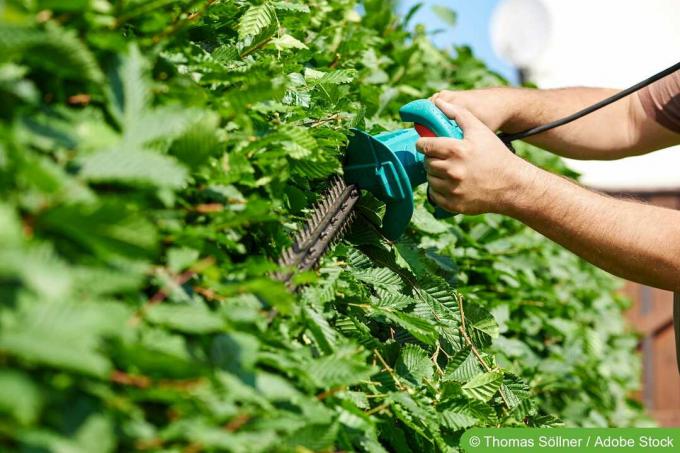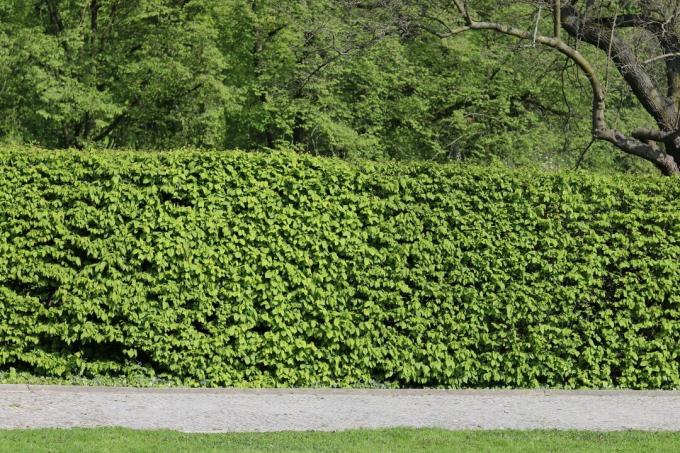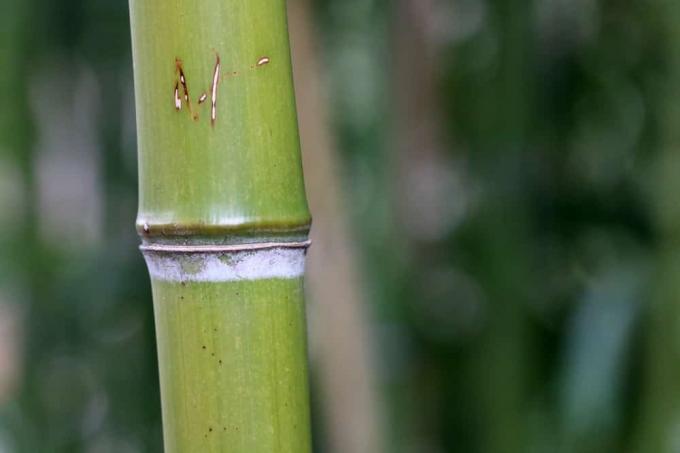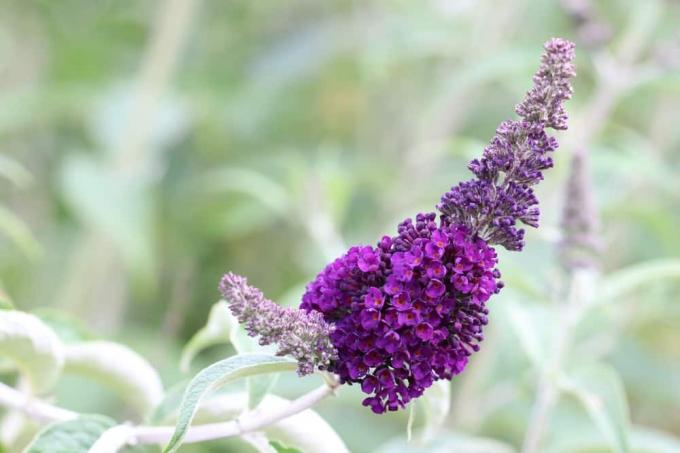

Table of contents
- Protection periods for hedges
- The right time
- The exceptions
- The right hedge trimming
- Cut deciduous hedges
- Cut needle hedges
- Pruning evergreen hedges
- cutting tools
- Worth knowing about hedge trimming shortly
There are hardly any hedges that don't need to be cut at all. As a rule, every hedge must be brought into shape regularly. Depending on the type of plant, there may be a rule for pruning or topiary. Basically, however, the rule of thumb is valid: the cut in spring should be completed by mid-March, the cut in summer begins at the end of July.
Protection periods for hedges
Protection times apply to all hedges. They serve to protect our domestic animals and extend from 1. March to 30. September of the year. During this time, only light topiary cuts may be made to a hedge. Anyone who does not comply with these protection times commits an administrative offense that can be punished.
The right time
In principle, any hedge can be shaped all year round. However, it makes sense to find the best pruning time for the respective variety and only then pruning. Then the cut will not cause any damage and the hedge will thrive. The early spring is particularly good for a cut. The trees have not yet sprouted and therefore only look bare for a short time. The new shoots quickly cover the interfaces. And the breeding business of the birds is not disturbed at this time. The hedge breeders among the birds are not disturbed.
The day for a hedge trimming should ideally be overcast. Too much sun damages the interfaces. If you cut it before winter, the temperatures should still be in the positive range, otherwise the hedge will look bare all winter and is not nice to look at.
If the hedge is around St. John's Day, which is the 24th. Cut in June, it often drives out a second time. After that, there will be silence for this year. From the end of August, cutting is prohibited. The tips that are then expelled cannot mature until frost and can therefore easily freeze to death.
If you really want to trim the hedge before winter, then autumn from mid-October to early November is the right time. The hedge plants are now already in the dormant phase. Now a cut is quite unproblematic. The prerequisite is that the ground is not frozen and there is no sun. Late afternoon is ideal. Then not only has the plant sap withdrawn from the branches into the trunk and the sun can no longer dry out the interfaces.
The exceptions
An exception to hedge trimming are early flowering shrubs. These are only cut after flowering. A cut in February or March destroys the already existing flowers and the magnificent flower is destroyed. Therefore, all flowering shrubs should only be cut after flowering.
The right hedge trimming
Hedge plants are therefore cut regularly so that they do not grow too high or too wide. In addition, the cut stimulates branching and makes the hedges nice and dense. This is especially important for evergreen plants. There are also basics that should be observed with every hedge trimming.
- Cut an evergreen hedge in a trapezoidal shape, i.e. wider at the base than at the crown. Important for a lot of light.
- A straight cut allows the lower parts of the plant to be slightly bare from the inside out.
- Better to round off right-angled corners. This also brings more light into the interior of the hedge plant.
- For a straight hedge trim you need tools like a stretched cord.
- Do not cut in the sun as the cutting edges burn easily.
- In snowy areas, trim the hedge at the top. This prevents snow breakage.
- Wear gloves when cutting. This can protect against injuries.
Cut deciduous hedges
Deciduous hedges can usually also be severely cut back. They also reliably sprout again from old wood. The cut is made from top to bottom. Check the overall picture again and again. Here, too, a horizontally stretched cord can be a good help. Again, the top should be cut narrower than the bottom.
Cut needle hedges
Needle hedges do not forgive pruning mistakes. That's why it's important to stick to the trapezoidal shape right from the start. If the plants become bare, the damage can hardly be corrected. With a thuja or a cypress, it takes years for the holes that have been made to grow back. In coniferous trees, such damage is irreparable. Coniferous hedges are cut for the first time a year after planting. They need rest to grow. From the second year, regular pruning is required, even if the desired height has not yet been reached. Since thujas are poisonous, allergic reactions can occur if they come into contact with the skin.
Tip:
Long-sleeved clothing and gloves protect against skin contact.
Pruning evergreen hedges
Evergreen hedges such as boxwood, medlar or cherry laurel should not be trimmed with electric hedge trimmers. Too many leaves are injured. Pathogens penetrate through the resulting wounds and everything also looks very ugly. A cut with secateurs is more work, but it is better for the health of the plants and the result looks much nicer.
In the case of evergreen conifers, if the main shoots are 20 to 30 cm higher than the desired height of the hedge, they are topped 15 cm above the crown height. Sufficient sprouting can form to overgrow the cut surfaces.
cutting tools
There are many hedge trimming tools available. Important when choosing are sharp blades, powerful pruning shears and good saws. Telescopic tools are ideal because they do not require a ladder. Cordless devices make you independent of a power connection. Provided the battery lasts a long time, working with it is simply fun.
Worth knowing about hedge trimming shortly
Cutting a hedge is usually not really difficult. Depending on the length of a hedge, however, it can be really exhausting. That's why keeping regular pruning appointments and sharp tools are a real help. Free-growing hedges do not require any pruning, but they require a lot of space. There is hardly that much space left in a normal garden.
- A hedge trimming should in spring and early summer take place, that is, in May and in June, before the shrubs cast out
- The second cut should then take place in the second half of August to October.
- If you have planted a hedge with leaves, you can also cut it in winter.
- One cut per year is usually sufficient, but the hedge will become denser if it is cut more often.
The shape you choose for your hedge is up to your creativity. However, you should note that the shape must be wider at the bottom than at the top. The trunk could otherwise bare, which doesn't look nice. Another little tip: if you want a straight line but don't feel comfortable doing it freehand, just stretch a line so you always have a good reference point.
 garden editorial
garden editorial I write about everything that interests me in my garden.
Learn more about hedges

Hornbeam hedge: 17 tips for care
Hornbeams (Carpinus betulus) are most commonly used as topiaries or hedge plants. They are actually not beeches at all, but belong to the birch family. The hornbeam is very robust, easy to care for and, in contrast to the common beech, not poisonous.

How fast does bamboo grow? | Information about growth
In domestic gardens, bamboo is usually used as a privacy screen or as a decorative solitary plant. The rapid growth, which can reach several cm a day, is impressive. It depends on the bamboo variety, care and the prevailing microclimate.

How fast does cherry laurel grow? | accelerate growth
The cherry laurel is a fast and densely growing tree. After planting, it usually only takes a few years for the young plants to grow into a tall, dense and evergreen hedge. In addition, growth can be accelerated by additional precautions.

Creating a mixed colorful hedge: 9 ideas for a mixed hedge
If you don't like it monotonous, you can also create a mixed hedge instead of a hedge from a single, evergreen plant species. There is a wide range of colorful hedges to choose from. There are special flowering hedges, ones for birds, scented ones, or for insects and butterflies.

Yellow cypress | 9 tips for care, pruning & growth
The yellow cypress is one of the most common hedge plants in our gardens. No wonder: it combines a great look with an opaque growth. How to properly care for them, cut them and generally promote their growth is here.

Thuja brabant turns brown or yellow: what to do? 8 common causes
When Thuja brabant turns yellow or brown, various factors can be responsible - but care mistakes are often the trigger. We reveal which factors are involved and how they can be counteracted.
